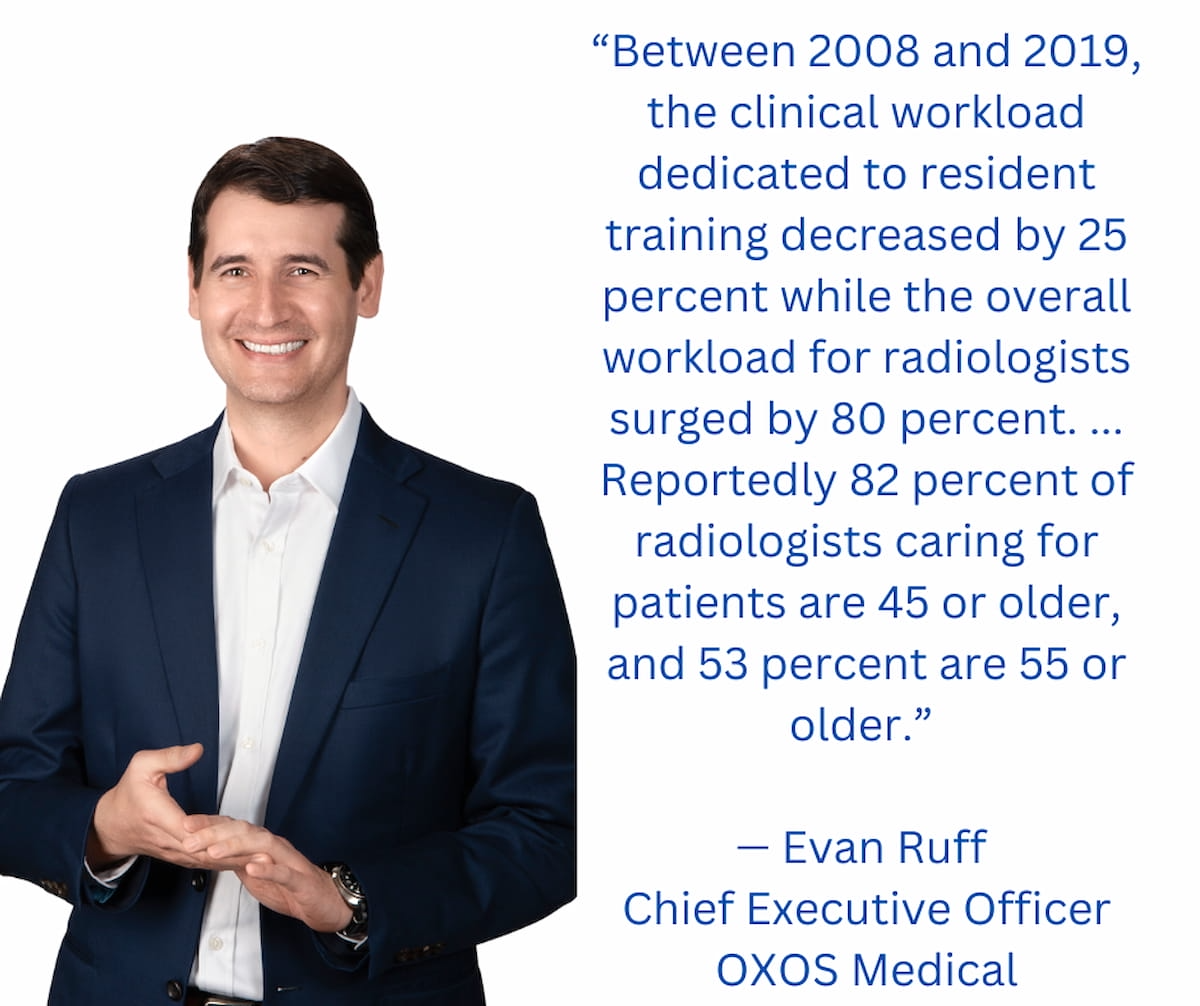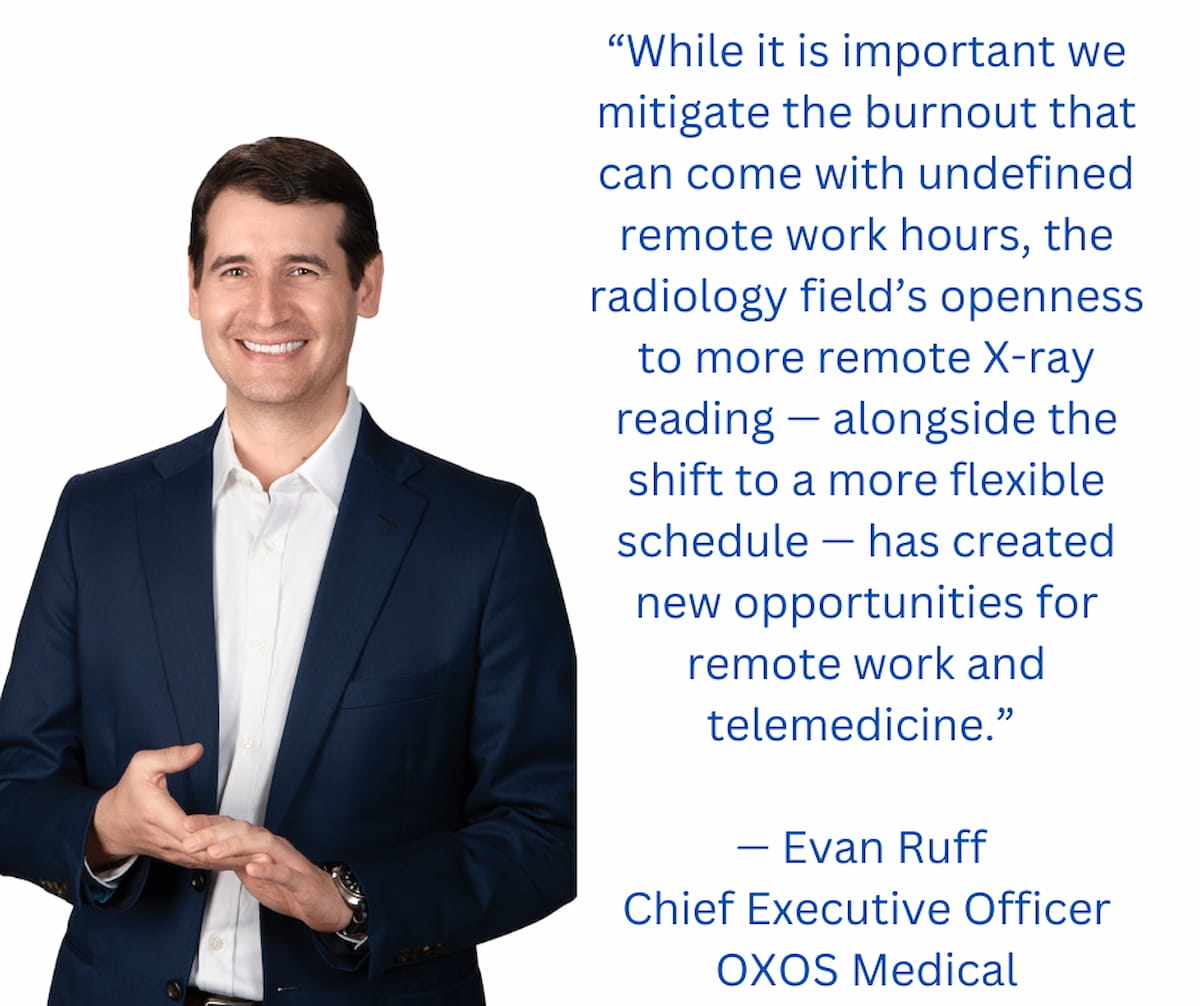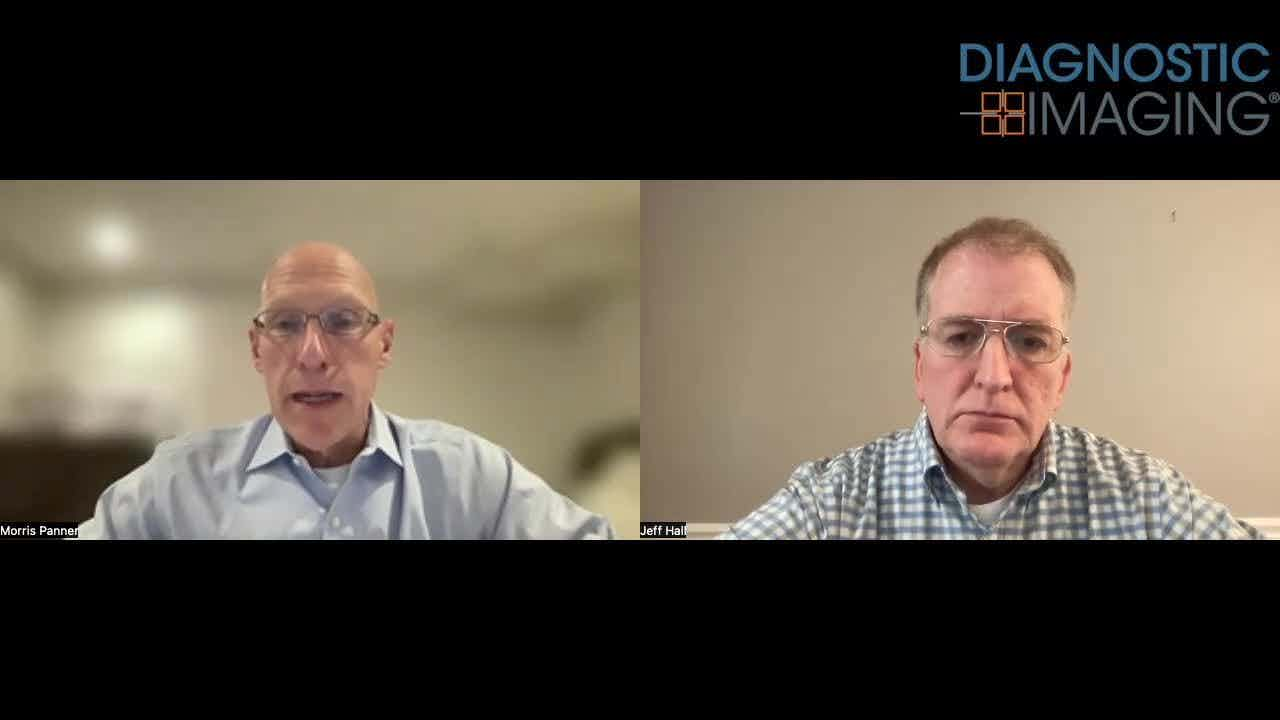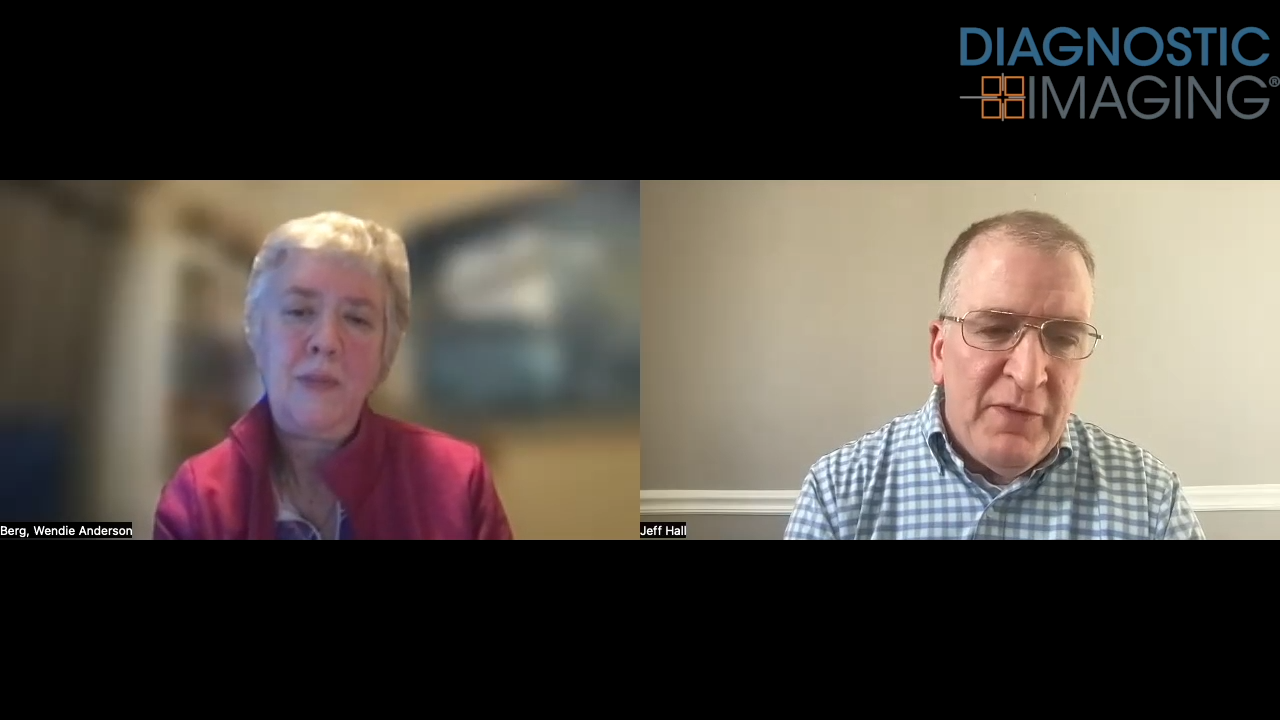How Embracing Technologies May Help Mitigate Burnout and the Radiologist Shortage
In light of increasing imaging volume, retirements and burnout in radiology, this author suggests that technologies such as portable X-ray devices may have a significant impact.
The radiology sector has a critical supply and demand problem.
Population growth, not to mention the increasing complexity of medical imaging studies, is driving a heightened need for radiology services. At the same time, the supply of radiologists isn’t keeping up. This is primarily caused by a stagnant number of residency training positions and an aging radiology workforce with an increased number of retirements occurring during the COVID-19 pandemic.1 Workloads are spiking for those remaining in the field, leading to delayed patient information.
Here is a closer look at why the situation is so urgent and how technological advancements can have an impact in radiology and the broader field of health care.
The Severe Imbalance of New Radiologists and Retiring Radiologists
The imbalance of new radiologists and retiring radiologists did not happen overnight. There has been a gradual shift for much of the last two decades. The challenge was made clear in a recent study of 35,595 radiologists.2 Between 2008 and 2019, the clinical workload dedicated to resident training decreased by 25 percent while the overall workload for radiologists surged by 80 percent. With the drop in trainees, longtime radiologists nearing retirement age have been forced to handle the additional workload. Reportedly 82 percent of radiologists caring for patients are 45 or older, and 53 percent are 55 or older.2

“The demand for imaging is outpacing what we’re doing on the training side. The number of radiologists in the workforce is not growing as fast as the population and the demand for imaging,” noted Vahid Yaghmai, MD, a professor and chair of radiological sciences at the University of California, Irvine.3
The shortage of radiology staff is also a root cause of steadily worsening patient care issues. Longer wait times for X-rays and diagnostic results can lead to increased anxiety and frustration for patients. Overburdened health-care providers may need help maintaining quality care. Additionally, radiologists may face burnout and job dissatisfaction due to excessive workloads, compromising patient care.
Enhancing Efficiency in X-Ray Reading
The health-care community can address this issue by harnessing technology to achieve three key objectives.
1. Greater efficiency and accuracy in X-ray reading. One of the most critical developments in solving radiology’s workforce challenges is the shift toward smaller, more efficient portable X-ray devices. The capability of these devices to utilize low X-ray tube voltage and radiation intensity, resulting in a smaller scatter area, allows for more consistent quality of care. Health-care providers can do their jobs quickly, see the X-ray, provide a diagnosis, communicate that to any other health-care workers connected to the case, and even send it along to the patient in a fraction of the time it would take with a legacy X-ray machine.
Artificial intelligence (AI) and machine learning offer another avenue for increased efficiency. By automating routine tasks and providing data-driven insights, AI can act as a virtual assistant, streamlining workflows and reducing the burden on medical professionals. While it cannot replace the human touch and expertise essential to health care, AI can boost productivity and enable practitioners to focus on patient care.
A recent Swedish study provides compelling evidence of AI's potential in cancer detection. Researchers found that one radiologist assisted by AI detected 20 percent more than two radiologists diagnosing without AI.4 Additionally, AI reduced the time spent reviewing scans by 44 percent. These findings highlight the transformative impact of AI on improving diagnostic accuracy and efficiency, ultimately leading to better patient care.

2. Facilitating a quicker diagnosis. Advancements in technology are not only improving diagnostic accuracy but also revolutionizing patient care. For example, Marc Tanner , M.D., FAAOS, is an orthopedic surgeon who works in the clinic and the field for his Georgia-based non-profit Safety on Site. Safety on Site assists in assessing injuries at motocross events. Dr. Tanner can consult with patients, give them an X-ray, diagnose them, and have them see their answers within minutes.
By making X-rays more accessible, we can ensure patients receive timely care without unnecessary burden. Quick and accurate X-ray results can make all the difference in critical situations.
In a situation like Dr. Tanner’s, he provides all the care for an event with about 4,000 attendees, giving dozens of X-rays, sometimes even back-to-back. Updating this technology has changed the game for Dr. Tanner and many who have jumped to using ultra-portable, advanced X-ray technology.
Recognizing the Potential Impact of Remote X-Ray Reading
3. Improved flexibility with remote work and teleradiology. The COVID-19 pandemic has reshaped the radiology landscape. While it is important we mitigate the burnout that can come with undefined remote work hours, the field’s openness to more remote X-ray reading — alongside the shift to a more flexible schedule — has created new opportunities for remote work and telemedicine. By embracing these advancements, the field can improve patient access to care, reduce the burden on radiologists, and enhance overall efficiency.
Remote work offers flexibility to experienced radiologists, attracting them to the field or extending their careers. Telemedicine expands access to specialized care, especially in underserved areas. Portable X-rays streamline the imaging process, reducing the burden on radiologists and enabling faster diagnosis. By embracing these technologies, the radiology field can attract and retain talent, improve patient access to care, and enhance efficiency, ultimately ensuring a sustainable future for the specialty.
Final Notes
The widening gap between demand and supply, coupled with an aging workforce and burnout, poses a severe threat to health-care providers and patients. However, emerging X-ray technologies offer a beacon of hope.
Ultra-portable X-ray devices, teleradiology, and advanced imaging technologies like AI and machine learning will revolutionize the field. These innovations streamline workflows, improve efficiency, and enhance patient experience. By embracing these technological advancements, radiologists can alleviate the burden of increasing workloads, attract and retain talent, and ultimately provide better care for patients.
Health-care institutions, policymakers, and industry leaders must recognize technology's transformative power and invest in its implementation. By doing so, we can help ensure radiology's sustainable future and facilitate high-quality care to patients for generations to come.
Mr. Ruff is the chief executive officer of OXOS Medical.
References
1. Matsumoto AH. The radiologist shortage conundrum. Amer Coll Radiol Bulletin. Available at: https://www.acr.org/clinical-resources/publications-and-research/acr-bulletin/The-Radiologist-Shortage-Conundrum . Published July 2, 2024. Accessed February 3, 2025.
2. Hagland M. On the way to RSNA23: What about that radiologist shortage? Healthcare Innovation. Available at: https://www.hcinnovationgroup.com/imaging/blog/53079004/on-the-way-to-rsna23-what-about-that-radiologist-shortage . Published November 22, 2023. Accessed February 3, 2025.
3. Henderson M. Radiology facing a global shortage. Radiological Society of North America (RSNA). Available at: https://www.rsna.org/news/2022/may/global-radiologist-shortage . Published May 10, 2022. Accessed February 3, 2024.
4. Perrone M. Will AI replace doctors who read X-rays, or just make them better than ever? Associated Press. Available at: https://apnews.com/article/ai-algorithms-chatgpt-doctors-radiologists-3bc95db51a41469c390b0f1f48c7dd4e . Published May 14, 2024. Accessed February 3, 2025.
The Reading Room Podcast: Emerging Trends in the Radiology Workforce
February 11th 2022Richard Duszak, MD, and Mina Makary, MD, discuss a number of issues, ranging from demographic trends and NPRPs to physician burnout and medical student recruitment, that figure to impact the radiology workforce now and in the near future.
New Collaboration Offers Promise of Automating Prior Authorizations in Radiology with AI
March 26th 2025In addition to a variety of tools to promote radiology workflow efficiencies, the integration of the Gravity AI tools into the PowerServer RIS platform may reduce time-consuming prior authorizations to minutes for completion.










